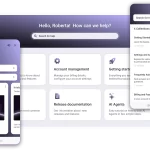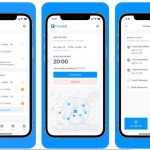Understanding the Benefits of Responsive Web Design
In today’s digital age, responsive web design benefits businesses by enhancing user experience and improving engagement. A website that adapts seamlessly across devices ensures users have a smooth and interactive browsing experience, reducing bounce rates and increasing conversions.
What is Responsive Web Design?

Responsive web design (RWD) is an approach that allows web pages to display optimally on various screen sizes and devices. Whether accessed from a desktop, tablet, or smartphone, a responsive website adjusts dynamically to provide a seamless experience. Implementing this design strategy is crucial in retaining visitors and encouraging interactions.
Key Benefits of Responsive Web Design
1. Improved User Experience
One of the primary responsive web design benefits is enhanced user experience. A mobile-friendly and intuitive interface makes navigation easier, leading to higher satisfaction and prolonged user engagement.
2. Increased Mobile Traffic
With more users accessing websites via mobile devices, a responsive design ensures your content remains accessible and engaging. This approach leads to lower bounce rates and higher conversions, making your site more effective in capturing audience interest.
3. Faster Page Load Speed
Page load speed is a crucial factor affecting user engagement. A well-optimized responsive website loads faster on all devices, keeping visitors engaged and reducing frustration.
4. Better SEO Performance
Search engines prioritize mobile-friendly websites. Google’s algorithm favors responsive web design, making it easier to rank higher in search results. Implementing RWD improves your site’s visibility, driving more organic traffic.
5. Cost-Effectiveness
Instead of maintaining multiple versions of a website for different devices, a single responsive site reduces maintenance costs and streamlines updates. This efficiency benefits businesses looking for long-term digital growth.
How Responsive Web Design Increases Engagement
Seamless Navigation
A responsive website ensures intuitive navigation, allowing users to find information quickly. Clear menus, optimized layouts, and easy scrolling contribute to a positive browsing experience.
Enhanced Readability
Readable fonts, properly spaced content, and high-quality images improve engagement. Responsive design adjusts these elements to fit any screen size, making content consumption effortless.
Stronger Call-to-Actions (CTAs)
With a responsive design, CTAs remain prominently displayed, encouraging users to take action, whether it’s making a purchase, signing up for a newsletter, or exploring more content.
Conclusion
The responsive web design benefits are undeniable, offering an improved user experience, higher engagement, and better SEO rankings. As mobile usage continues to grow, businesses must adopt responsive design strategies to stay competitive. By optimizing for all devices, you ensure that your audience remains engaged, leading to greater success in the digital landscape.






















